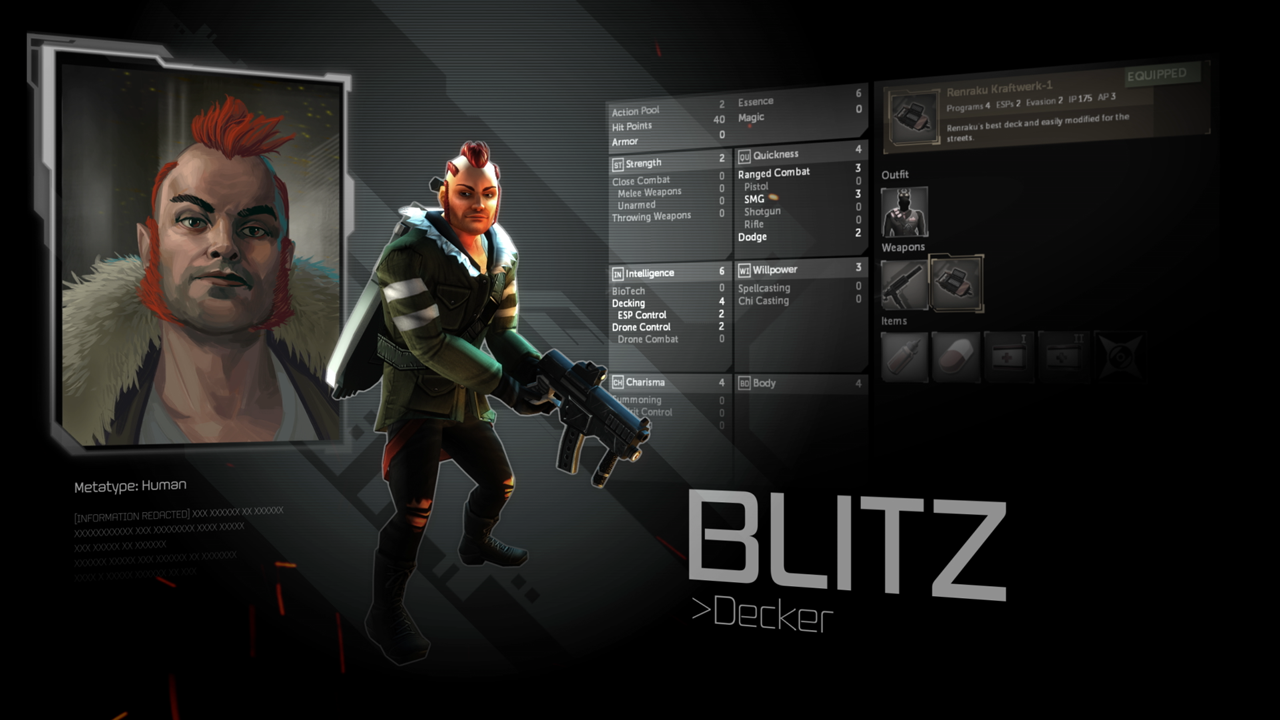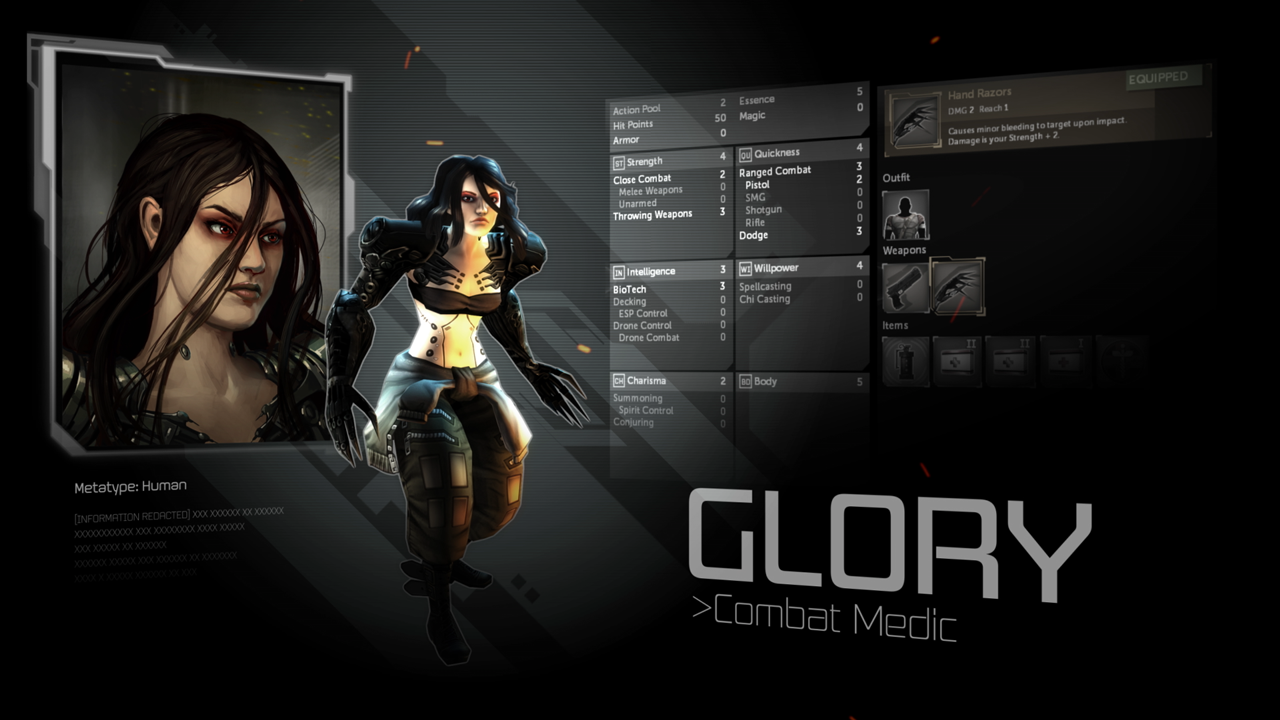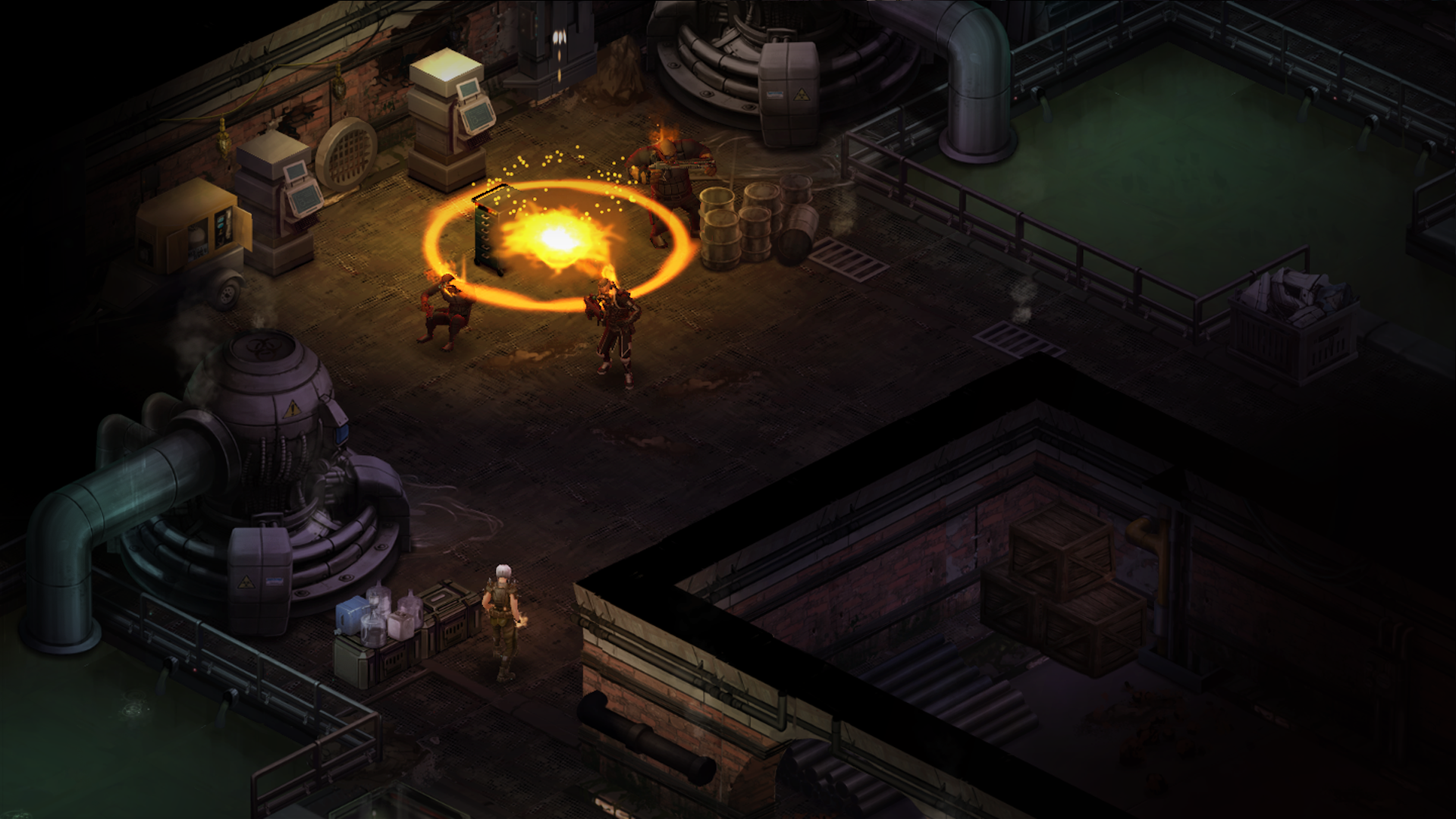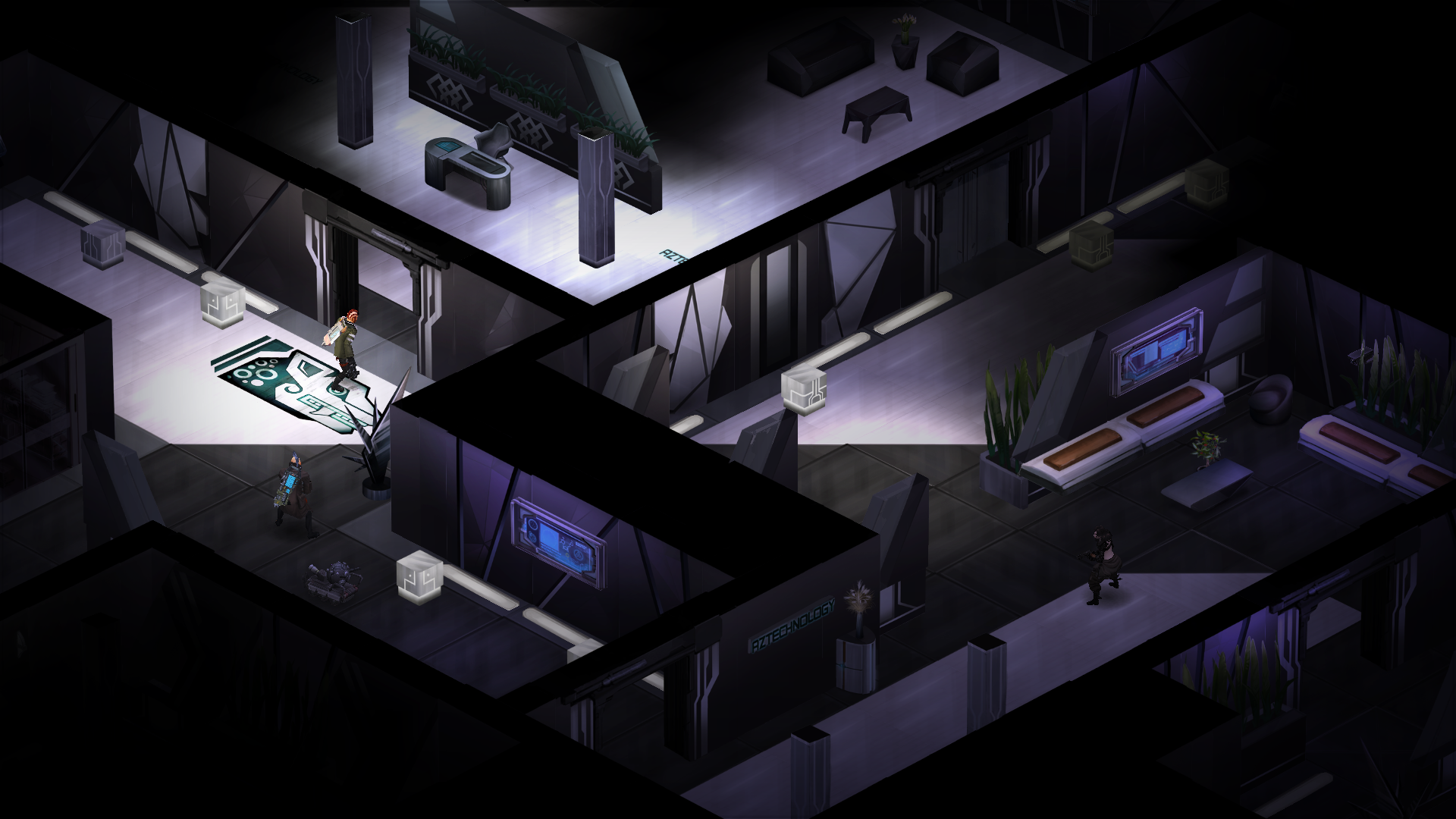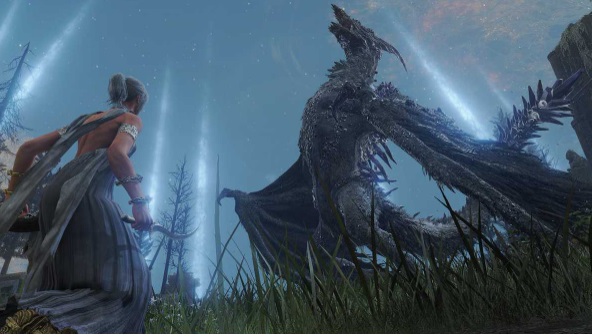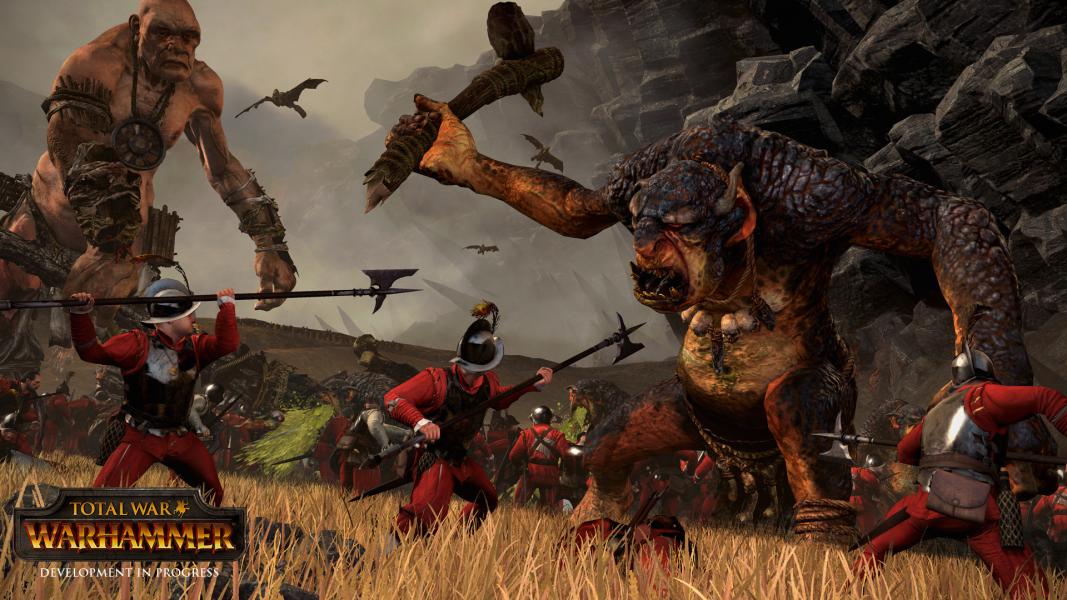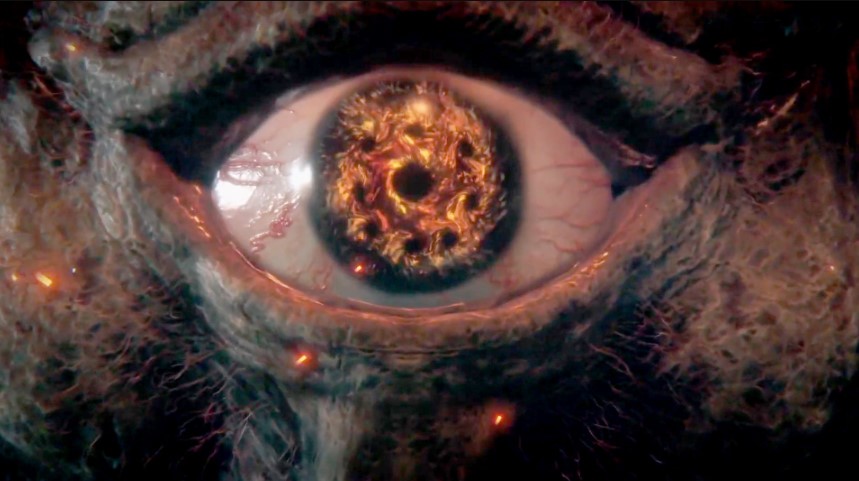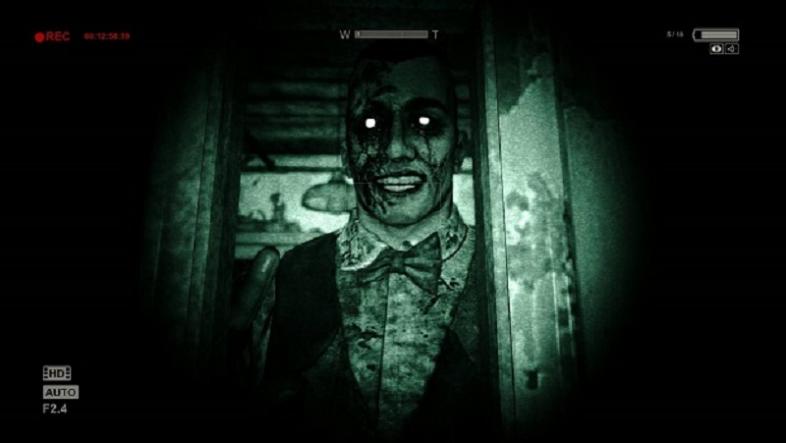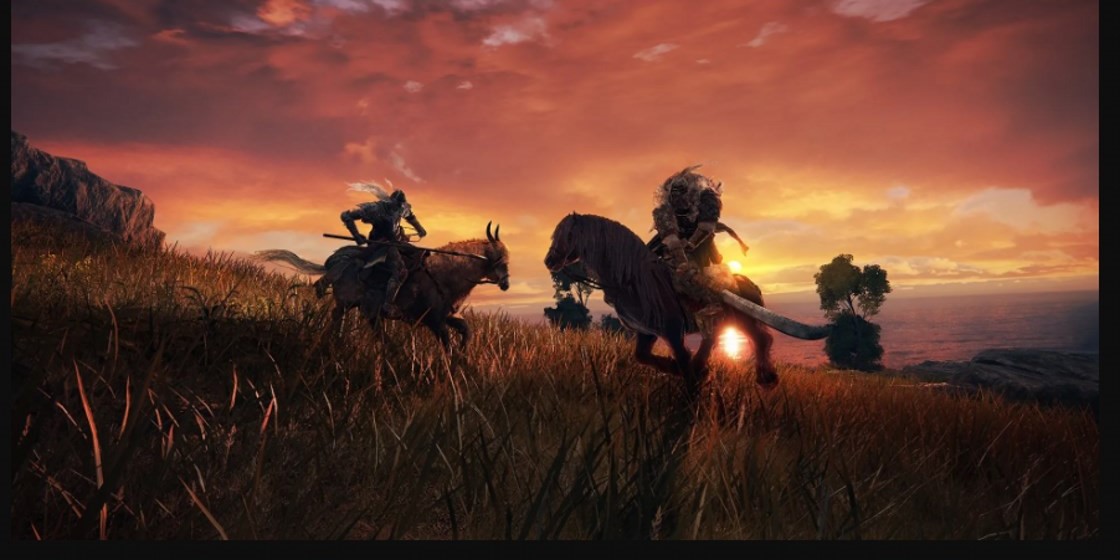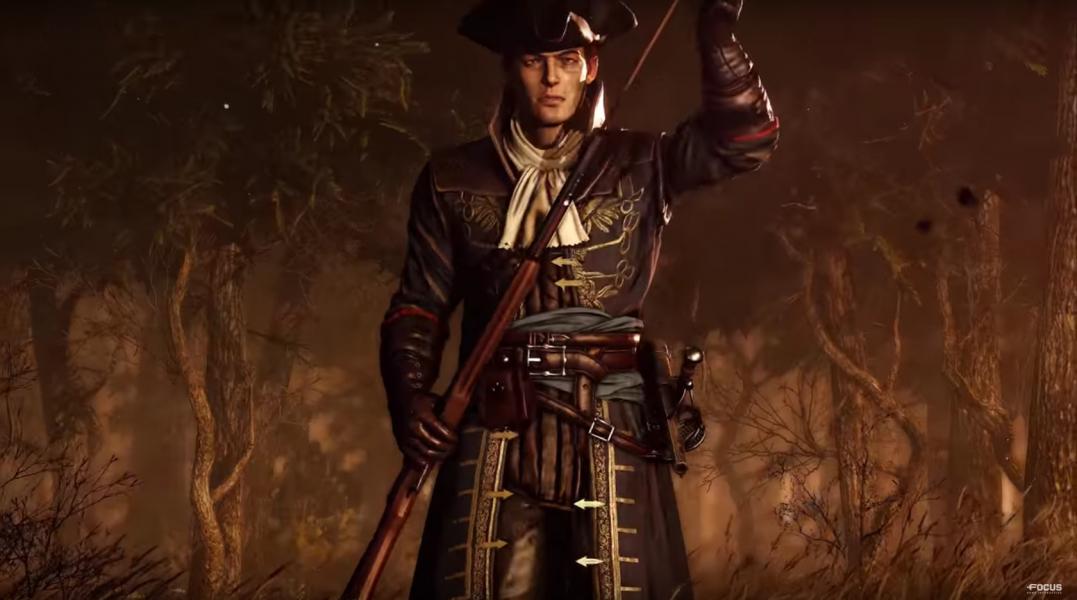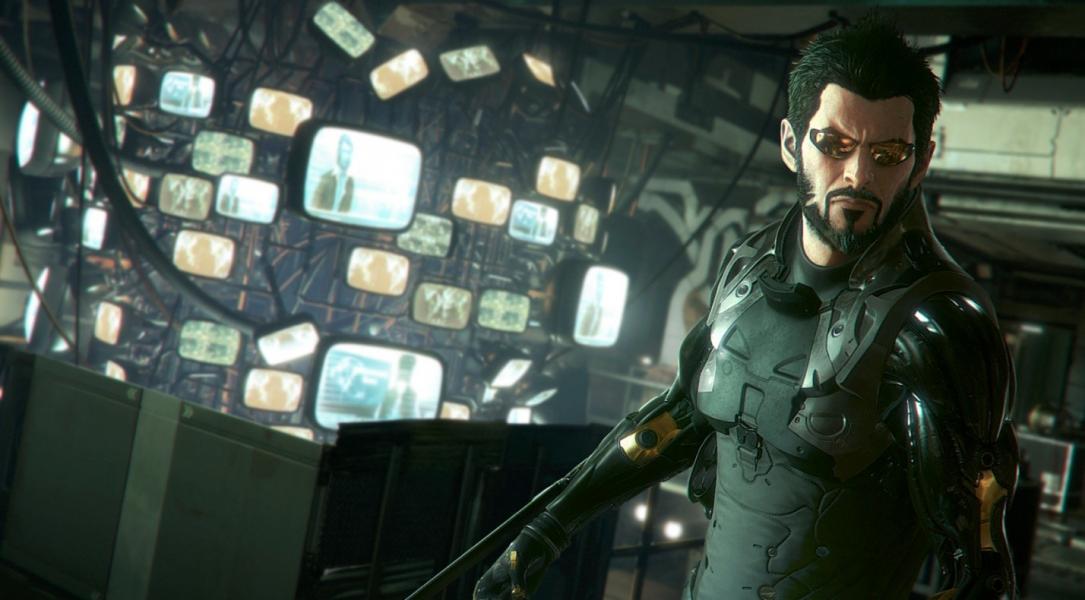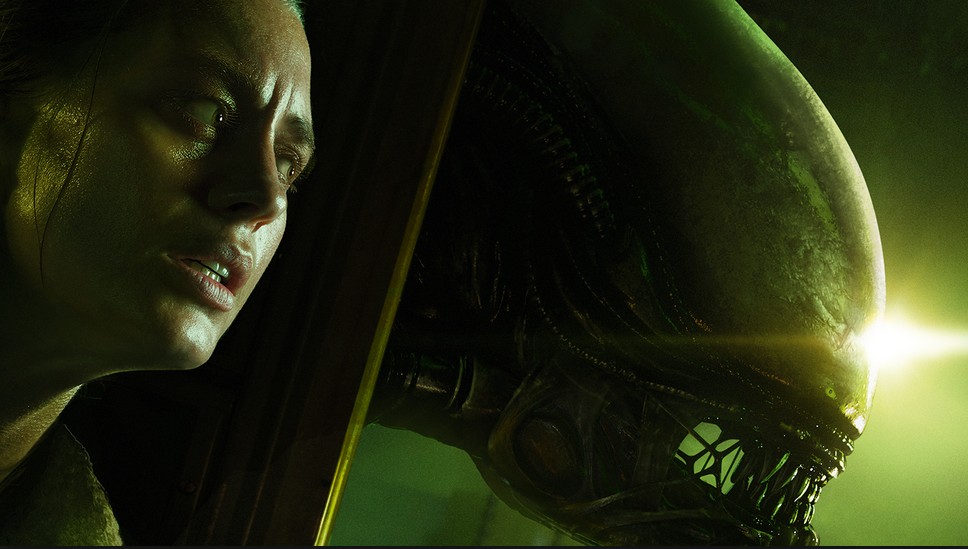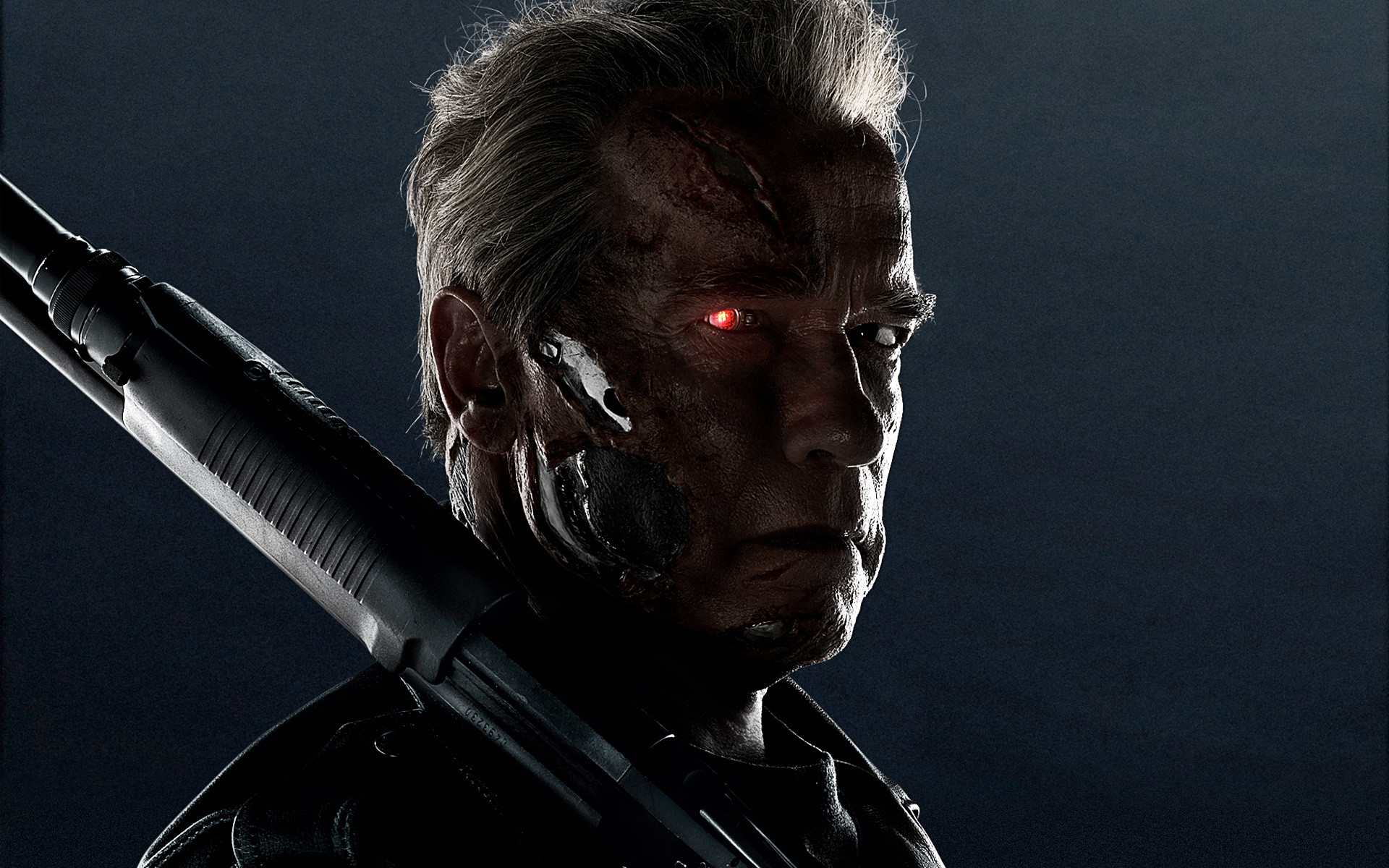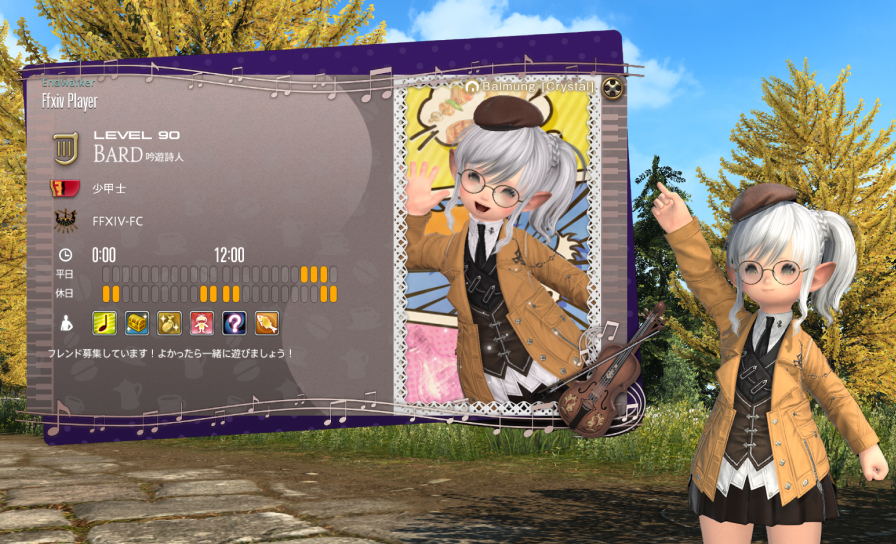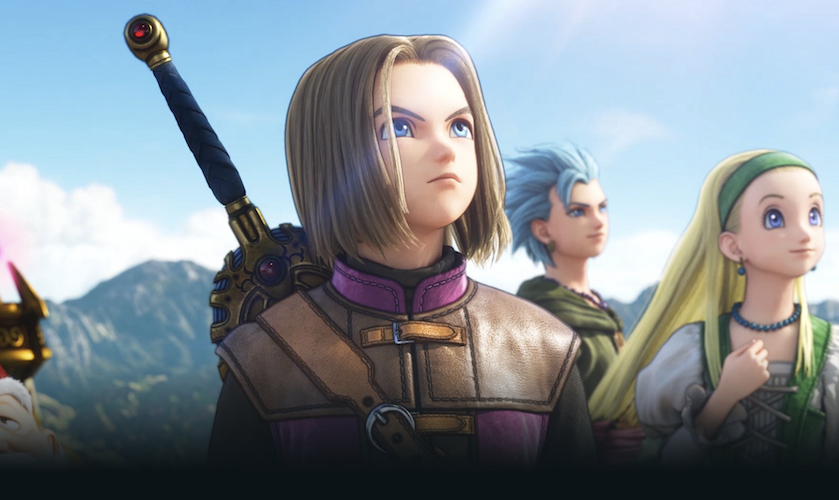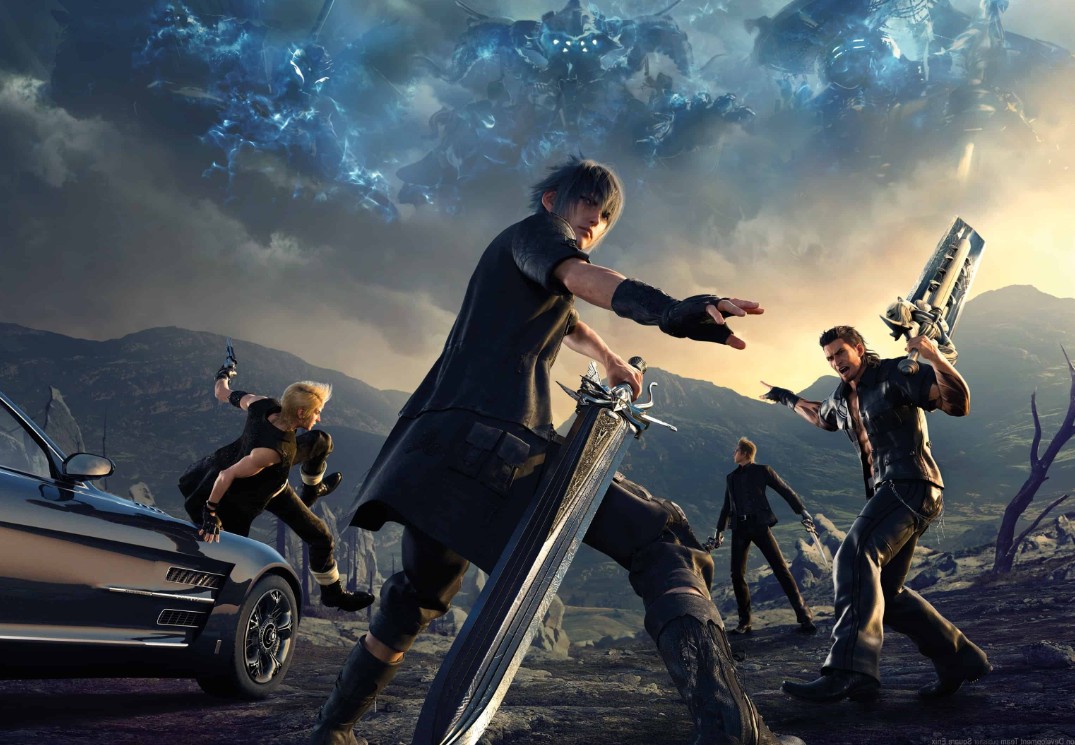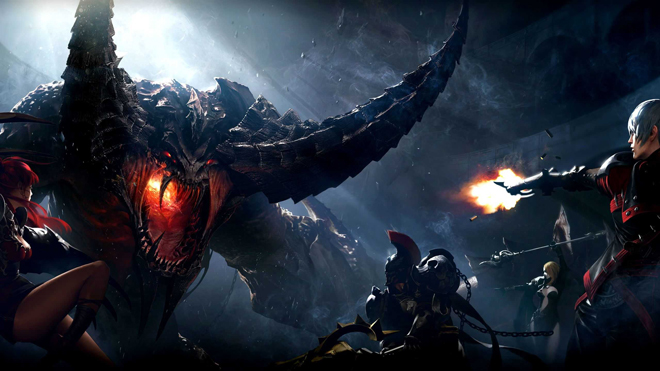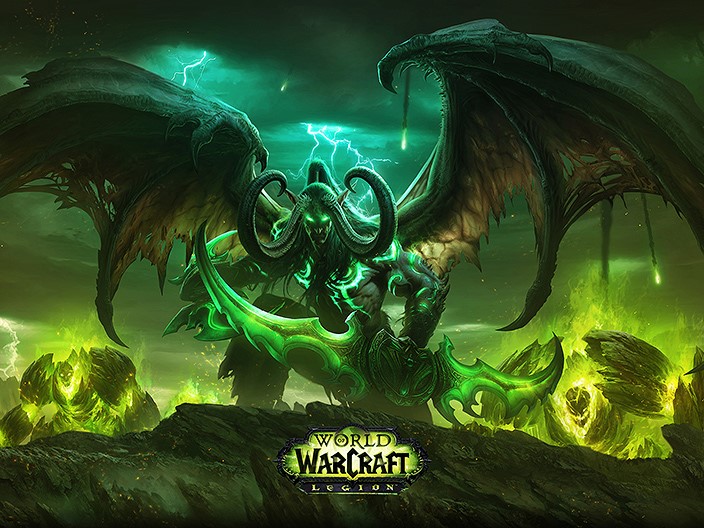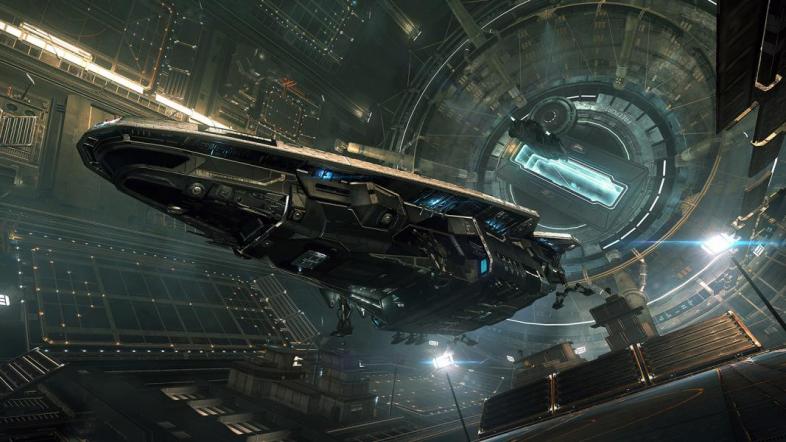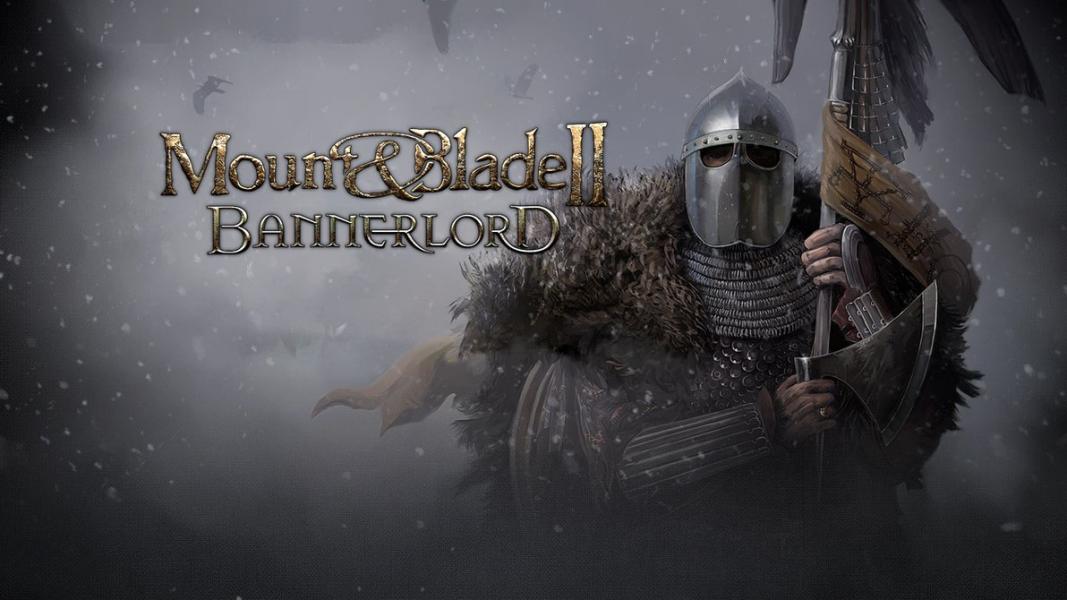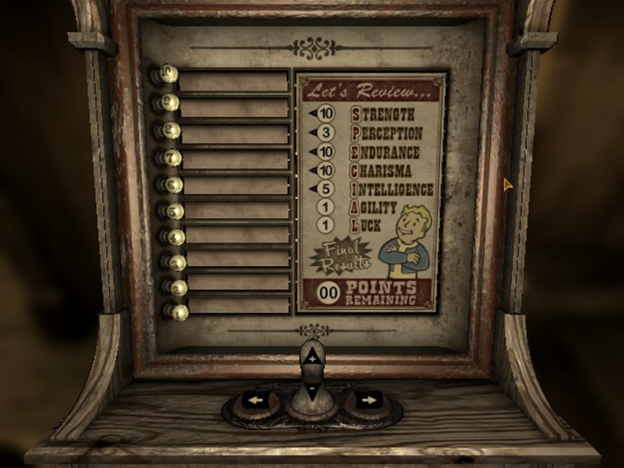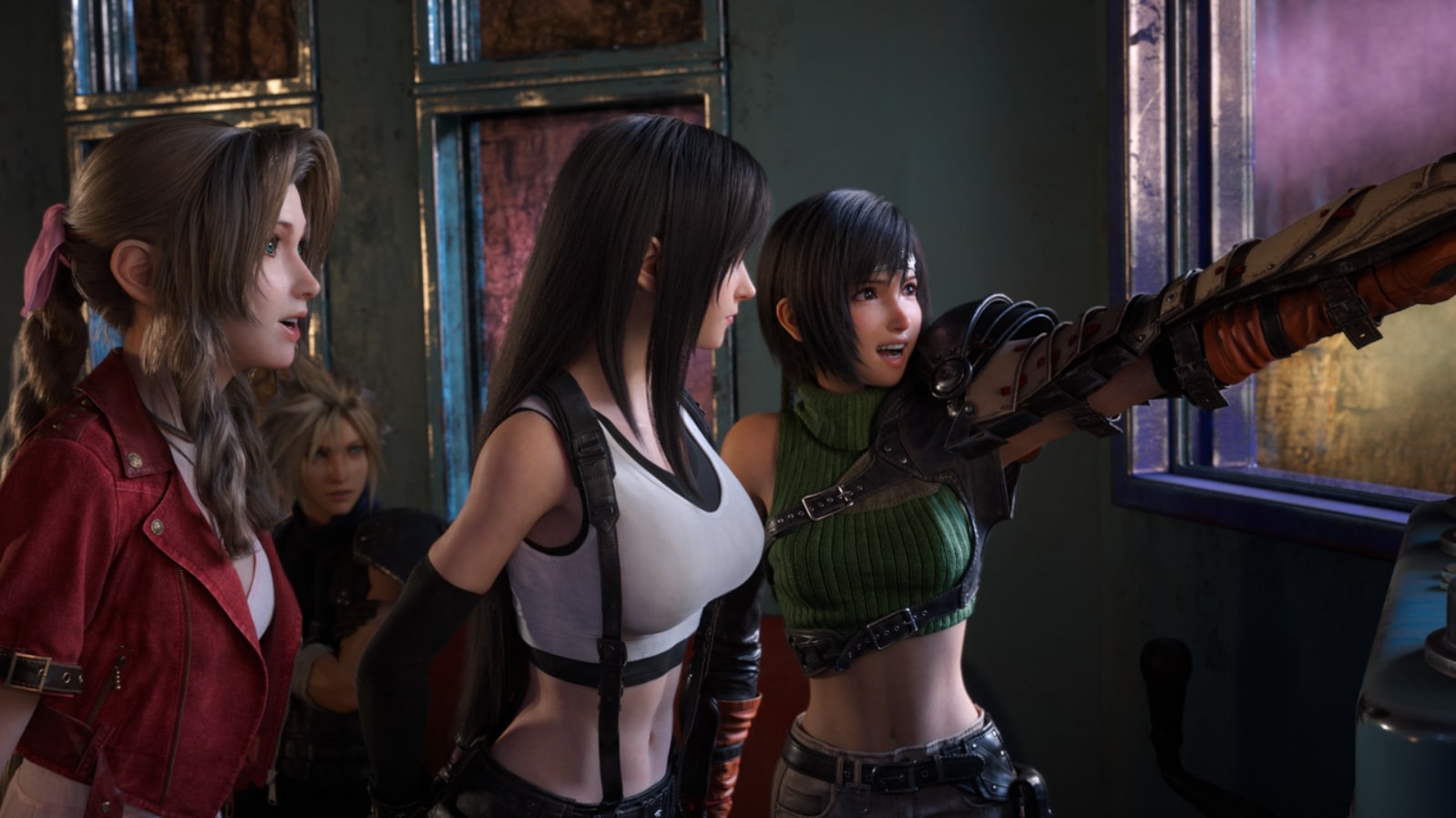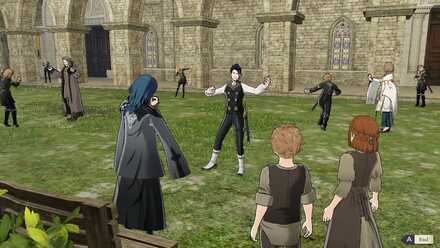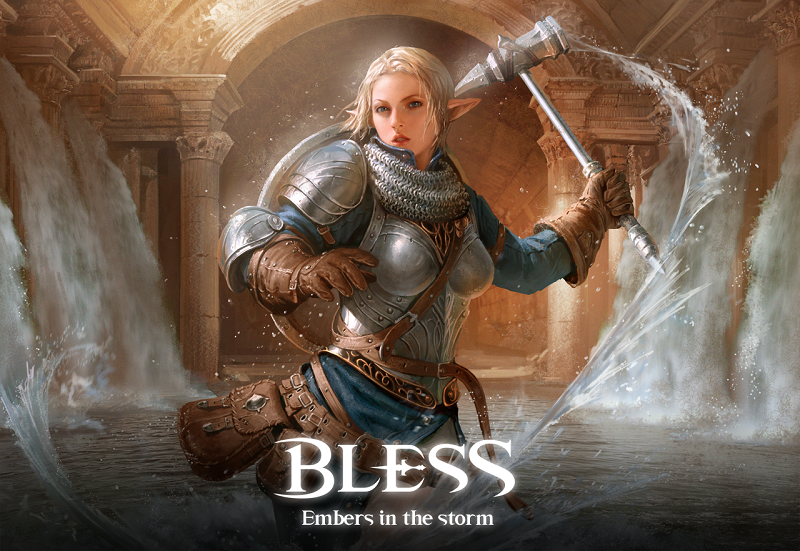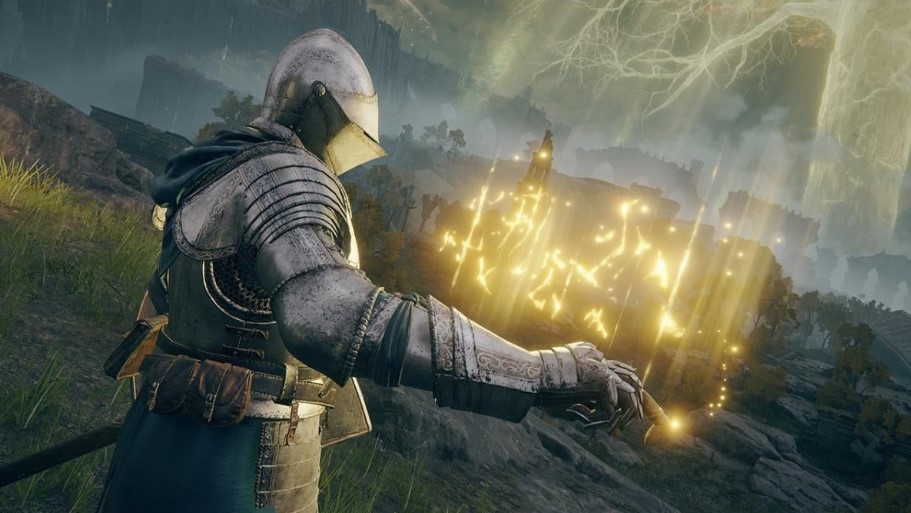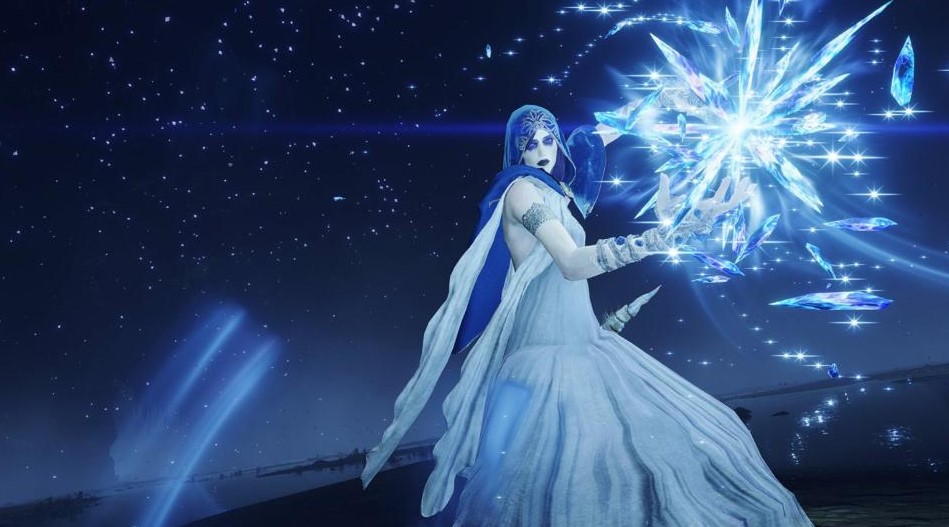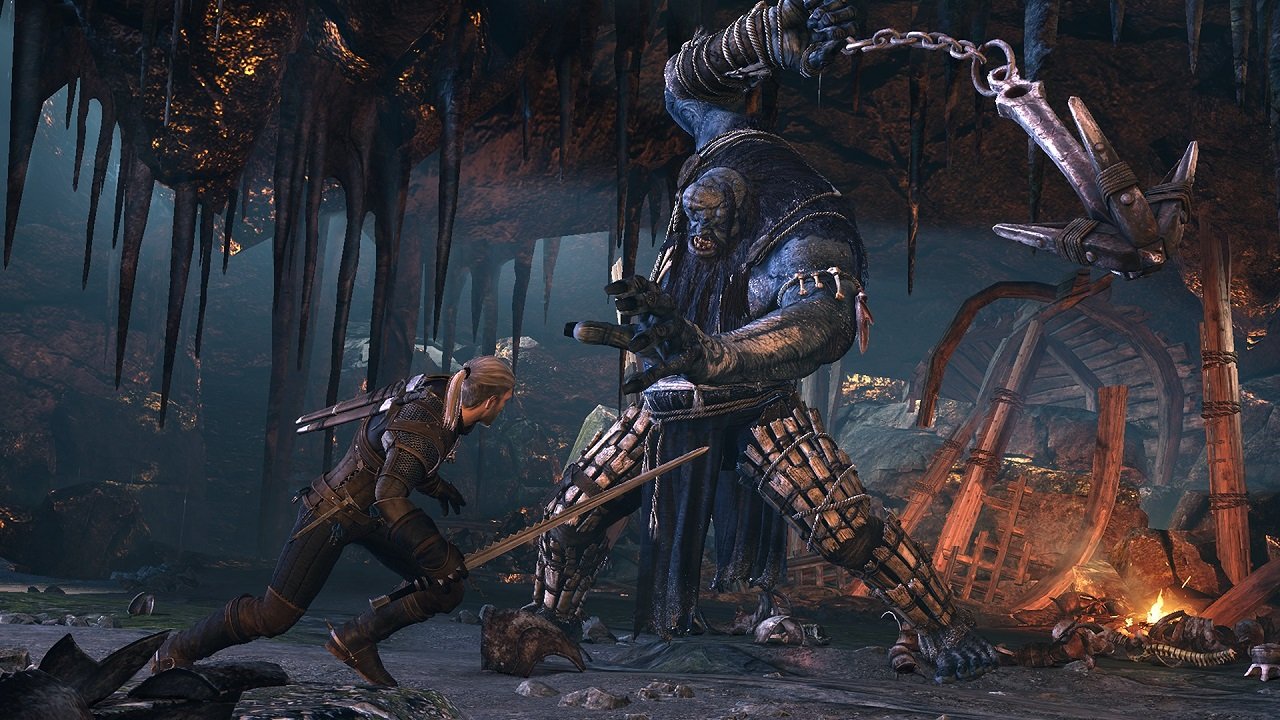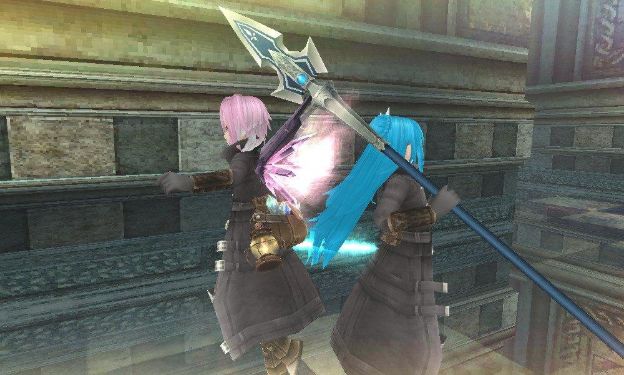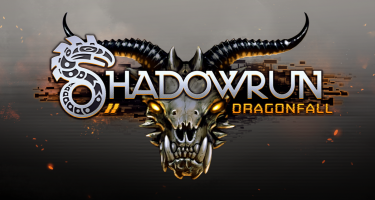
Introduction
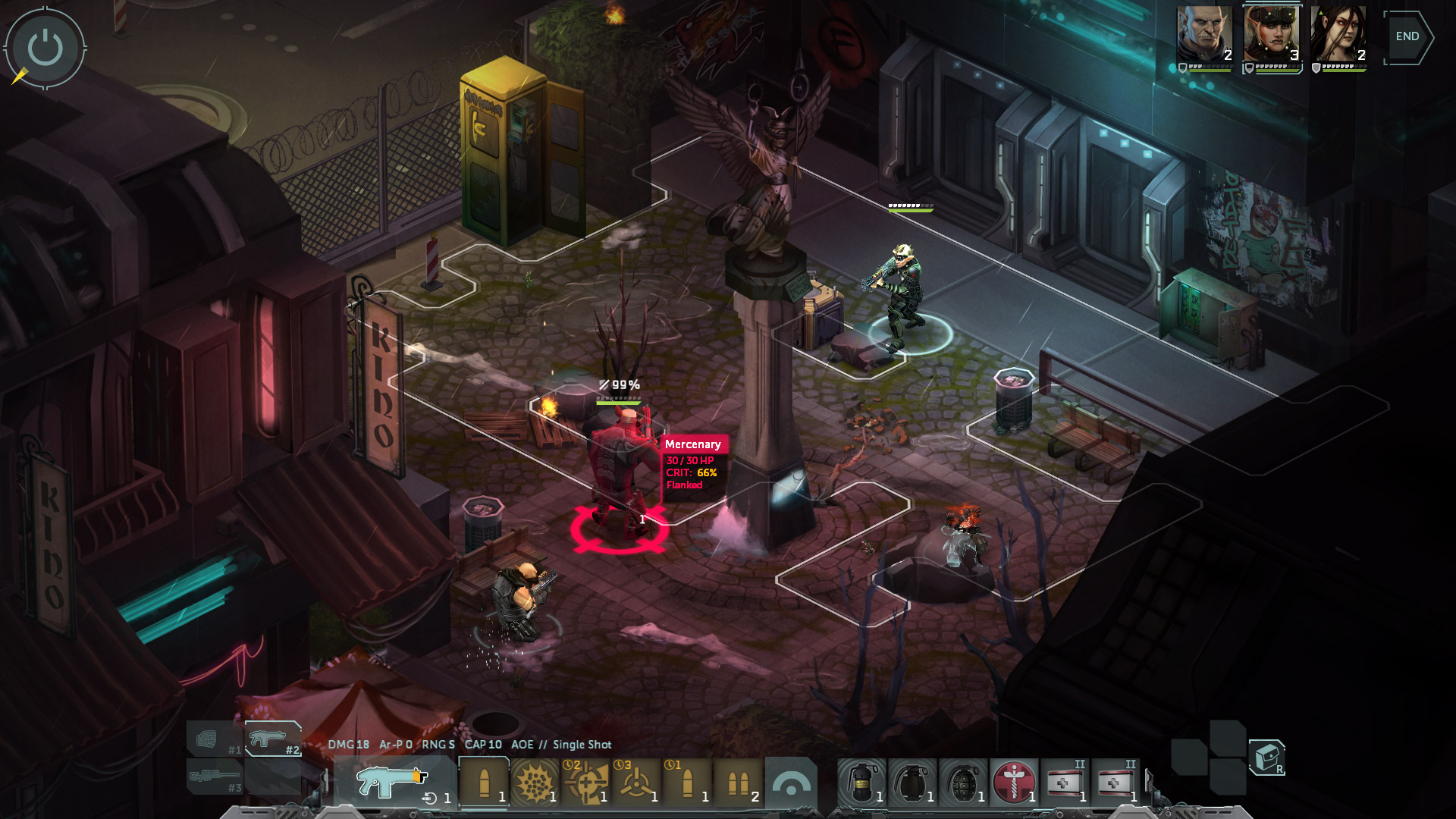
A monument to decay.
The Shadowrun universe is one of the most-beloved fantasy worlds among pen-and-paper roleplayers and videogame enthusiasts alike. With its marriage of a cyberpunk and high fantasy, intriguing film-noir/supernatural thriller plotlines, and Blade Runner-ish aesthetic, Shadowrun seemed like the perfect source material for computer and console RPGs to draw upon. But after two excellent games were released during the early 90s on the Mega Drive and Super Nintendo, there was very little follow-up apart from a multiplayer FPS released in 2007 to the bafflement of fans and casual observers alike.
It was a long wait, but in 2013 Shadowrun finally returned, thanks to Kickstarter, with the appropriately-titled Shadowrun Returns. Fans were elated, but while the game was generally received positive reviews in the press, a lot of the saltier RPG veterans—including myself—couldn’t help feel that the game was far more linear and constrictive than they were hoping.
Fortunately, a full-blown expansion entitled Shadowrun Dragonfall was hot on the heels of the original release, and it promised to address many of the complaints that the core audience had raised about the first game.
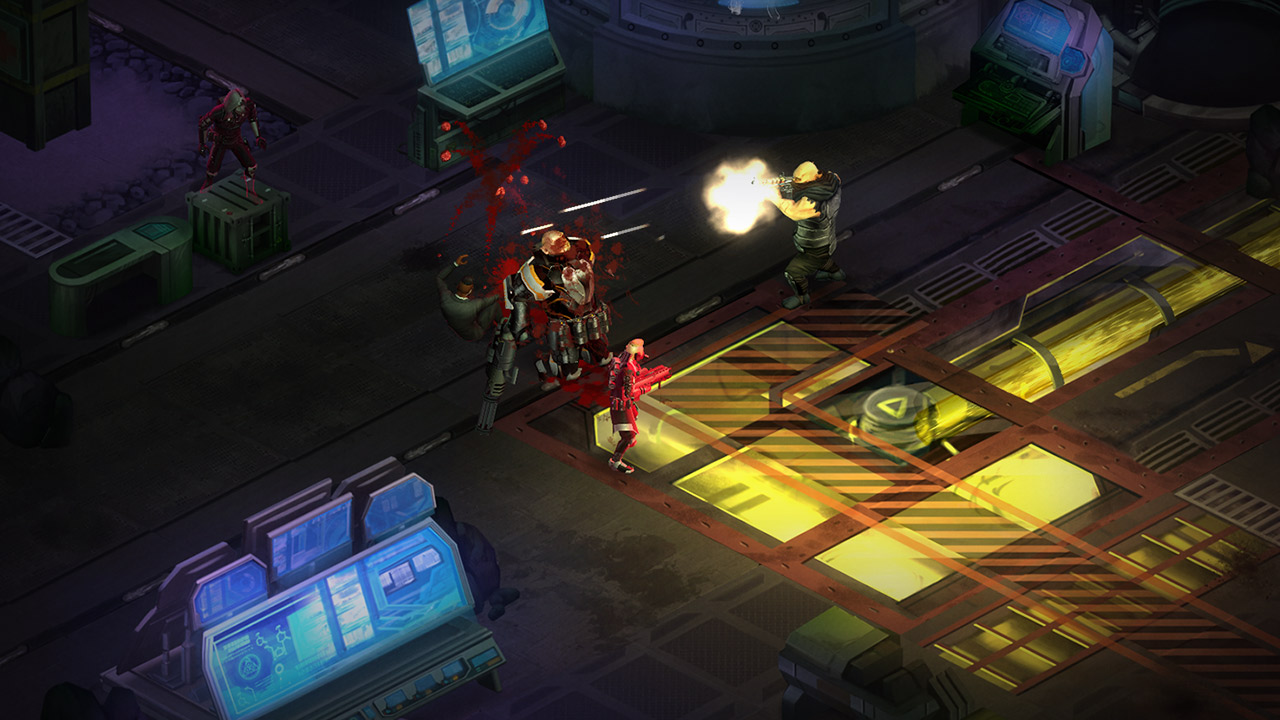
Fountains of blood.
If you’re curious about just how well it measured up to expectations, then read on.
Story
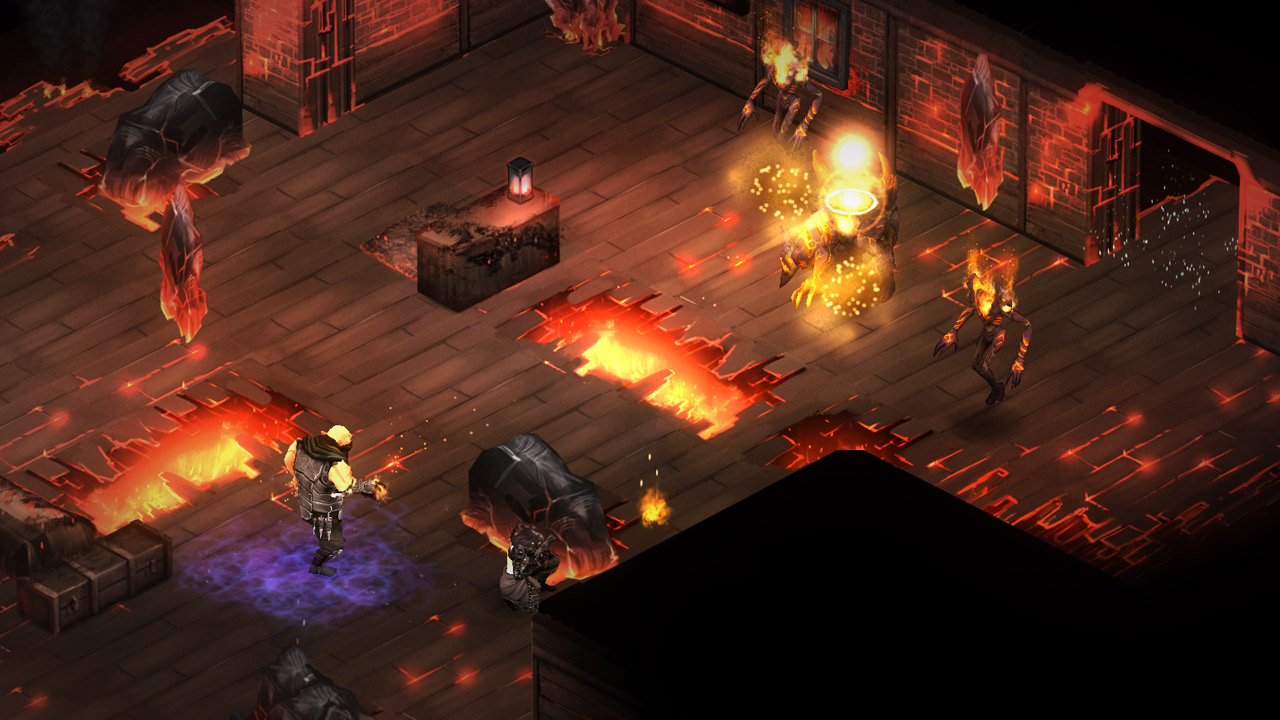
Hellmouth downtown
Despite all the apocalyptic forecasts, 2012 was, in the cosmic grand scheme of things, a fairly normal year. Not so in the Shadowrun universe. Magic with a capital “M”, and perhaps a “k” at the end, came back in the most pyrotechnical way possible in Shadowrun’s 2012, and it brought with it an assortment of creatures that most folk thought were merely legends, fairy tales, or just plain made up.
The friendliest among Earth’s returning guests were the elves, orks, trolls, and dwarves—all of whom were lumped into the “metahuman” category by the categorizers. The drop bears, nagas, wraiths, and hellhounds were rather less friendly, and quickly got to the business of hunting down human and metahuman alike.
As you can imagine, the sudden appearance of all of these fantastical creatures, along with the newfound magical abilities bequeathed to some “Regular Joe” humans, caused quite a disruption to the status quo. New powers clashed and old ones fell, and eventually every geopolitical boundary on the map had to be redrawn and redrawn again.
Only those entities that could adapt quickly to the new situation in which the world had found itself survived. Continent-spanning “megacorporations” proved to be more adaptable than most, and they thrived as a result. These megacorps, in fact, came to replace the old governments, and even had private armies at their beck and call.
Private armies have their limitations, of course. For one thing, any action that a private army undertakes leads back to the owners of that army—which is not always desirable in a world where rival megacorps have armies of their own. And yet, there are still trade secrets to be stolen, assets to procure, and key players to eliminate: That’s where the Shadowrunners come in.
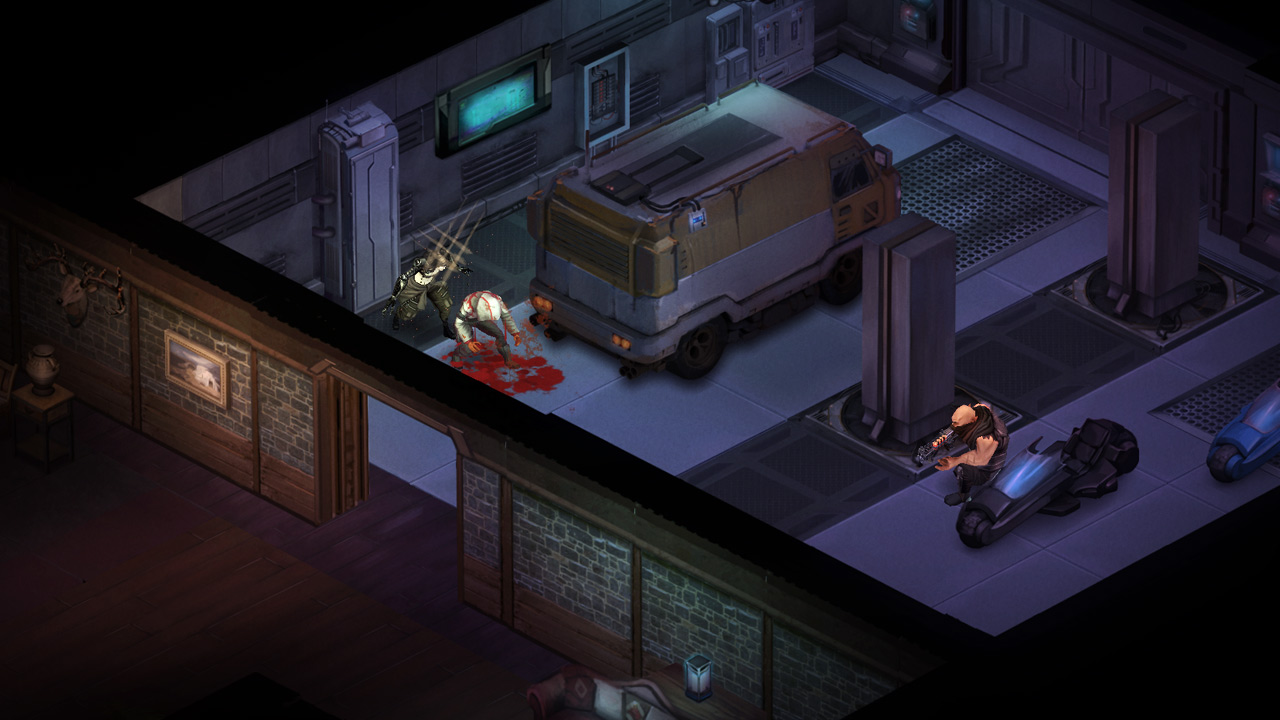
Dirty deeds, done dirt cheap
Shadowrunners are not an organization unto themselves, rather, they are the crème de la crème of the criminal world. Some shadowrunners work in loosely-affiliated crews, while others work alone; some are specialists in Hermetic magic, while others are experts in wielding military-grade assault weapons and explosives. All that shadowrunners have in common is that they work for the highest bidder, and rarely turn down an op—no matter how black it is.
In Shadowrun Dragonfall you take on the role of one a shadowrunner who is appointed leader of his crew after an op goes bad and the crew’s former leader is killed. As the crew’s new leader, it will not up to deliver on lucrative contracts, but to find out who or what is responsible for the death of your predecessor.
Characters
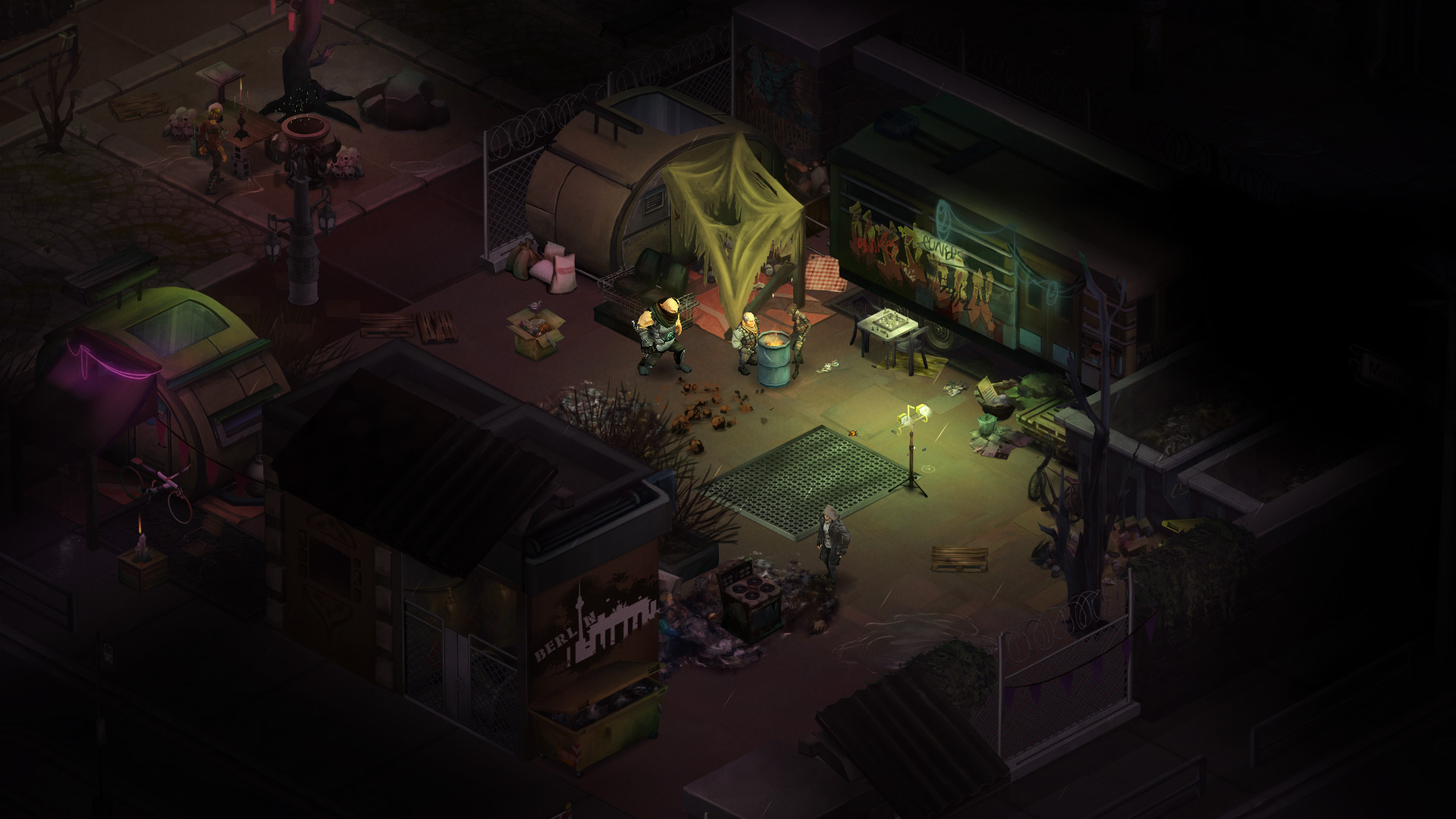
A bit of disorderly beauty.
It is the year 2054, 42 years after magic returned to the world, and stable power structures have yet to emerge, resulting in a more lawless, chaotic conditions than most of us are accustomed to today. People have had to learn to fend for themselves, and megacorps, governments, street gangs have had to fund, develop, or steal new innovations in biotech, cybertech, and magical research in order to compete for territory and control. The people of the Shadowrun universe are toughened survivors, used to watching their own backs, and slow to trust strangers; they also frequently pack heavy weapons and cybernetic enhancements.
As a shadowrunner, you will meet some of the most hardboiled, ruthless, and ingenious players in the struggle for survival and supremacy: Beginning with your crew.
One of the biggest improvements Dragonfall brings to the table is the addition of fully fleshed-out crewmembers instead of faceless, interchangeable hirelings. Each of your crewmembers has an intriguing backstory for you to either explore or ignore, and they will react to the decisions you make as their leader.
For me, the most immediately-fascinating character was Glory: A strikingly-beautiful woman whose extensive augmentation through cybernetics appears to have robbed her of emotion and humanity. Glory’s almost-clinical detachment (appropriate, given that she functions as the team’s medic) was something that I related to a great deal, and I was always eager to delve through her dialogues.
Another character I related to was the troll ex-soldier, Eiger. She is rather more hot-tempered than Glory, but her concern for professionalism and order above all made her an instant favourite. And like Glory, the more I learned about her complicated past, the more invested in her character I became.
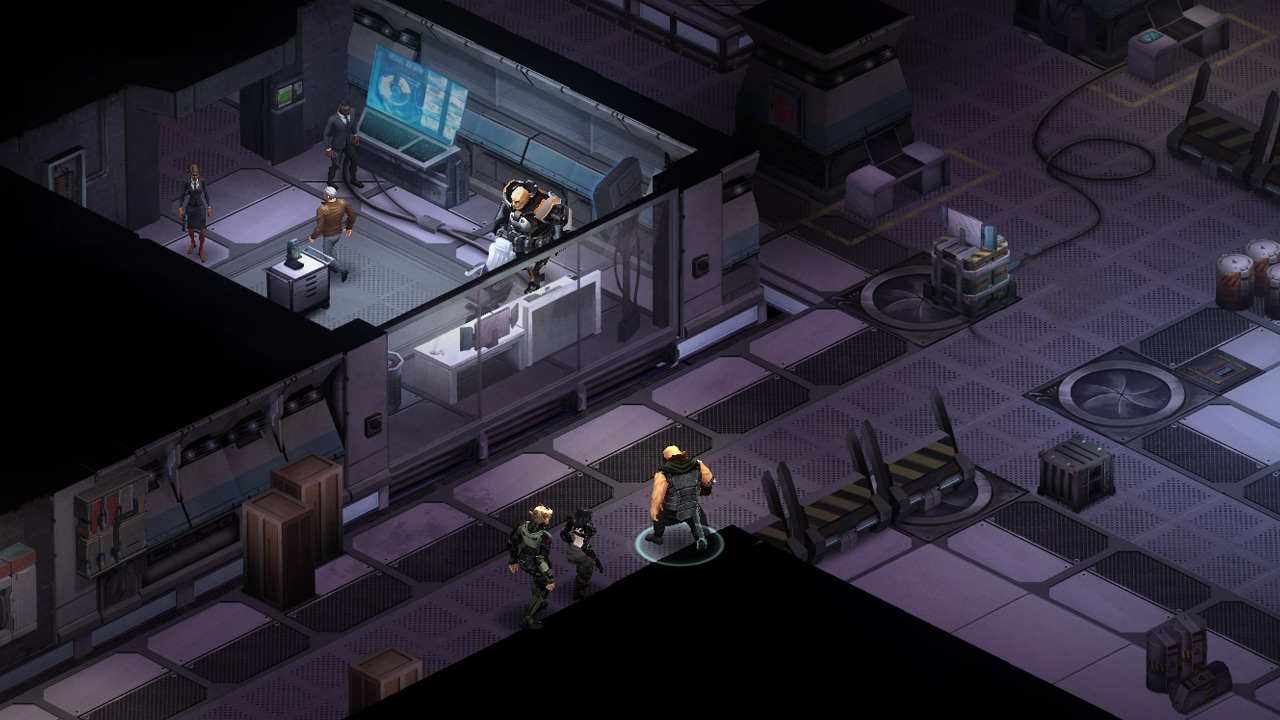
An imposing-looking thug.
Rounding out the team are the human shaman, Dietrich, and the dwarven “Decker” (more on this later), Blitz. Neither of these characters grabbed me at first, my interest in Dietrich in particular grew as the game went on. Dietrich and Blitz were both heavily involved in the anarchist uprisings in Berlin, so they contribute a great deal to the player’s understanding of the world they are exploring and interacting with.
Being invested in the individuals who fight by your side makes a huge difference to the player’s investment in the game as a whole, and I hope that Harebrained Schemes continue to expand this dimension of the series in the upcoming Shadowrun: Hong Kong.
Character Customization
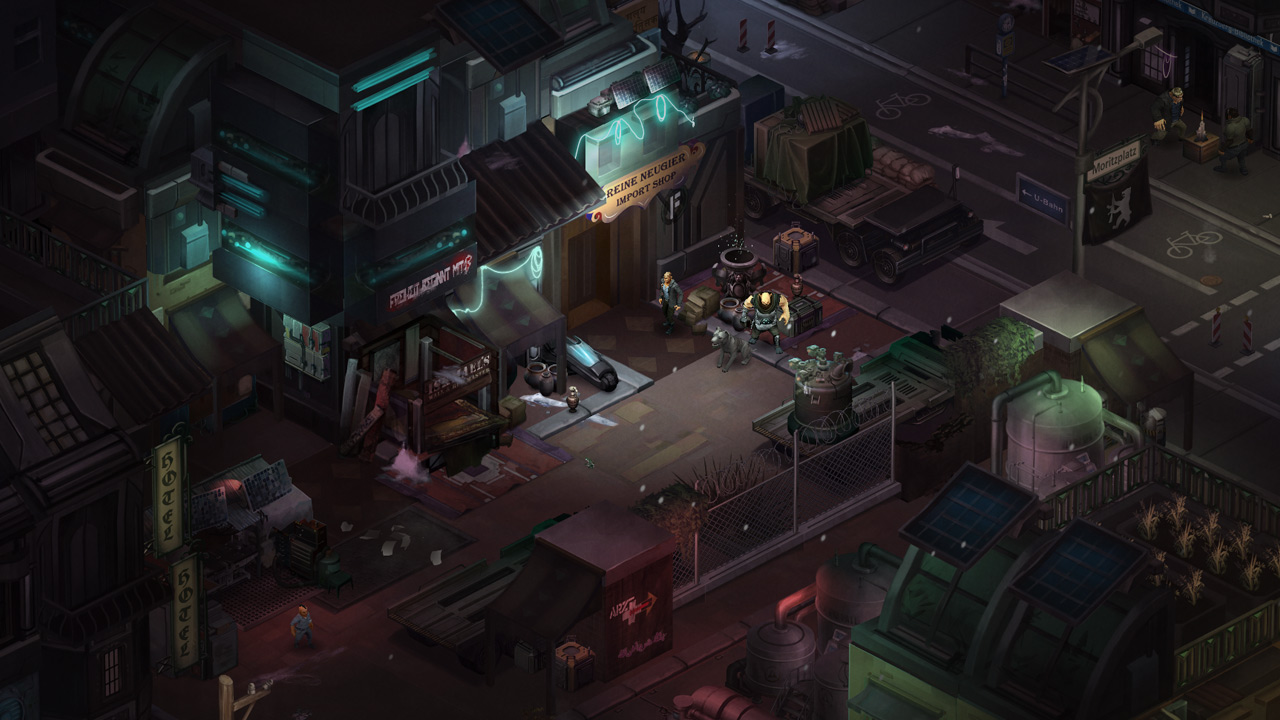
The streets aren't safe at night, but it's almost always night.
Character creation in Shadowrun Dragonfall allows players to select the gender, race, and class “archetype” for their character, along with some fairly rudimentary cosmetic options.
Available races include human, troll, ork, dwarf, and elf. Each of the races have different bonuses, so that an ork might make for a great berserker capable of charging into—and through—enemy lines for close-range, very painful fisticuffs, but an elf might be more suited providing precision support fire, or sniping from afar.
Regardless of what race you decide upon, you are free to choose from any of the available “archetypes.” These archetypes are not classes in the usual sense; instead they are templates which provide something of a starting point that players can then build upon.
The Shaman and the Mage are the dedicated spell slingers of the Shadowrun world; the former calls upon, and can even summon, powerful elemental spirits and hideous demons to aid them on the battlefield, while the latter can cast bolts of lightning, streams of acid, or create protective barriers upon their allies.
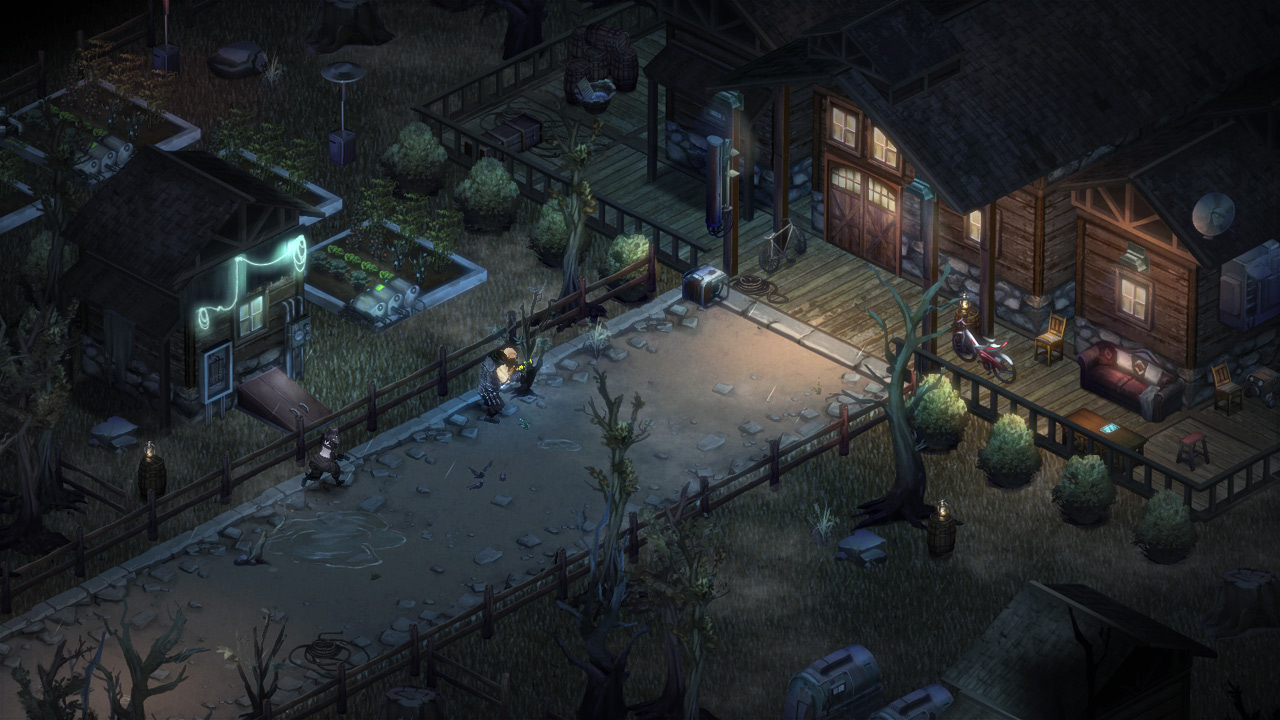
A dystopian farmstead.
Street Samurai, by contrast, focus on mastering conventional weapons, such as blades, hammers, shotguns, assault rifles, and pistols—up to three of which they can bring to any given fight.
Deckers prefer to avoid a direct fight at any range, and instead work in the background to hack security networks, disable alarms, change the targeting information of hostile targets, and generally turning the enemy’s own technology against them.
Similarly, the Rigger tends to avoid direct confrontations, and instead utilizes their custom-built drones to heal allies, dispatch enemies with heavy mounted weapons, or lay down covering fire and smoke to assist with tactical manoeuvres.
Players who know exactly what they want can forgo the archetypes altogether and create their own character from the ground-up. The different skills and abilities are all fairly easy to understand, so even new players should have little difficulty in designing their own build, provided they’re willing to spend a little extra time.
World
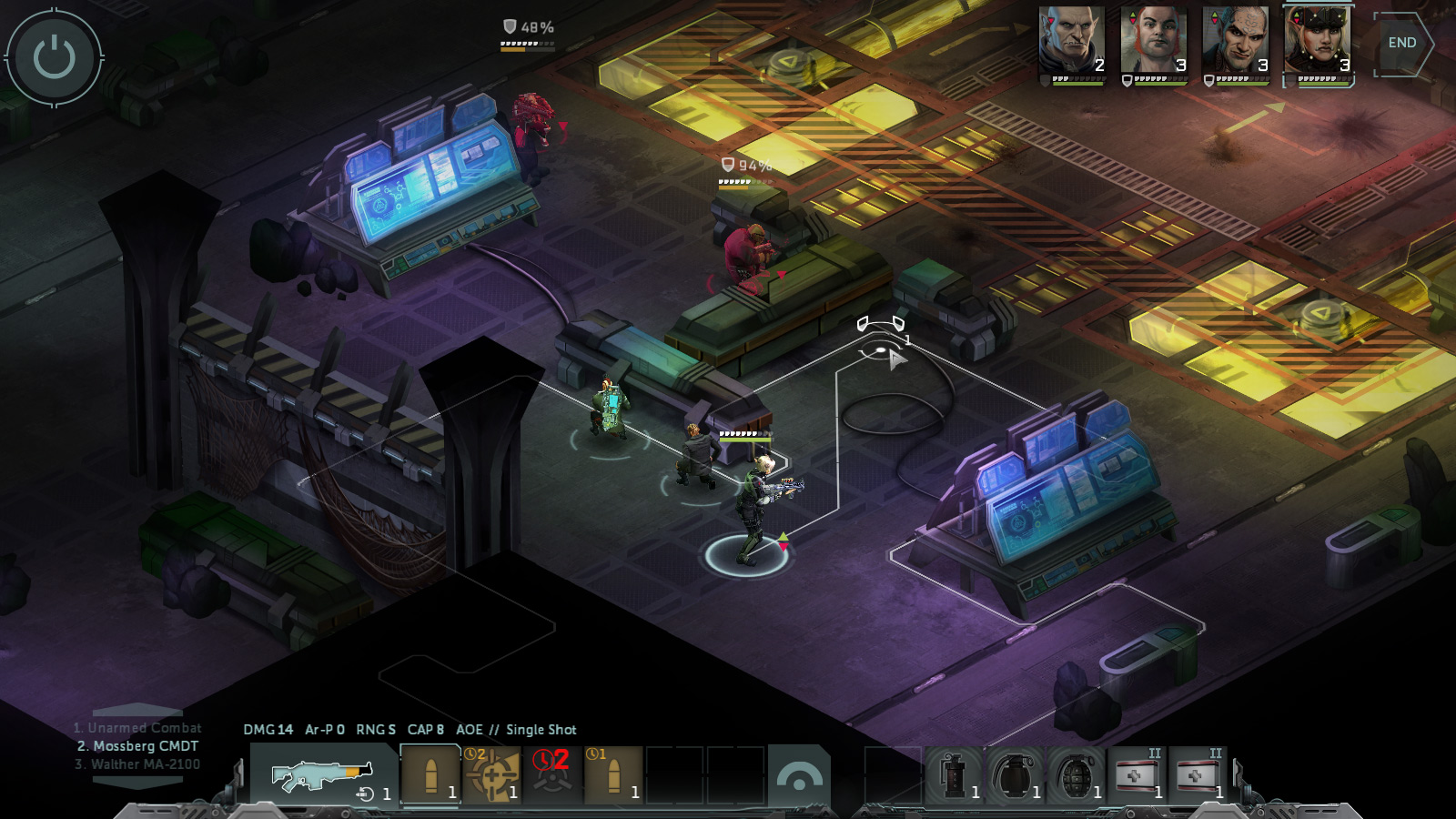
Knowing when to grab cover, and when to break cover, is essential.
Shadowrun Dragonfall is set in the “Flux State”-controlled city of Berlin. The Flux State is pretty much what the name would imply: A semi-stable anarchy where power is in constant flux between different powers and interests, without a centralized ruling body of any sort. Consequently, Berlin is even more lawless than most other cities in the Shadowrun universe, making it a land of opportunity for fortune seekers and belly crawlers everywhere; including shadowrunners like you.
As you explore Berlin, undertaking contracts and tracking down leads, you will gradually learn more about its tumultuous past. Murderous cults following the demonic “Horned Man” totem, and the nefarious “Black Lodge” are bad enough, but the Great Dragon Feurschwang is a name still whispered in fear.
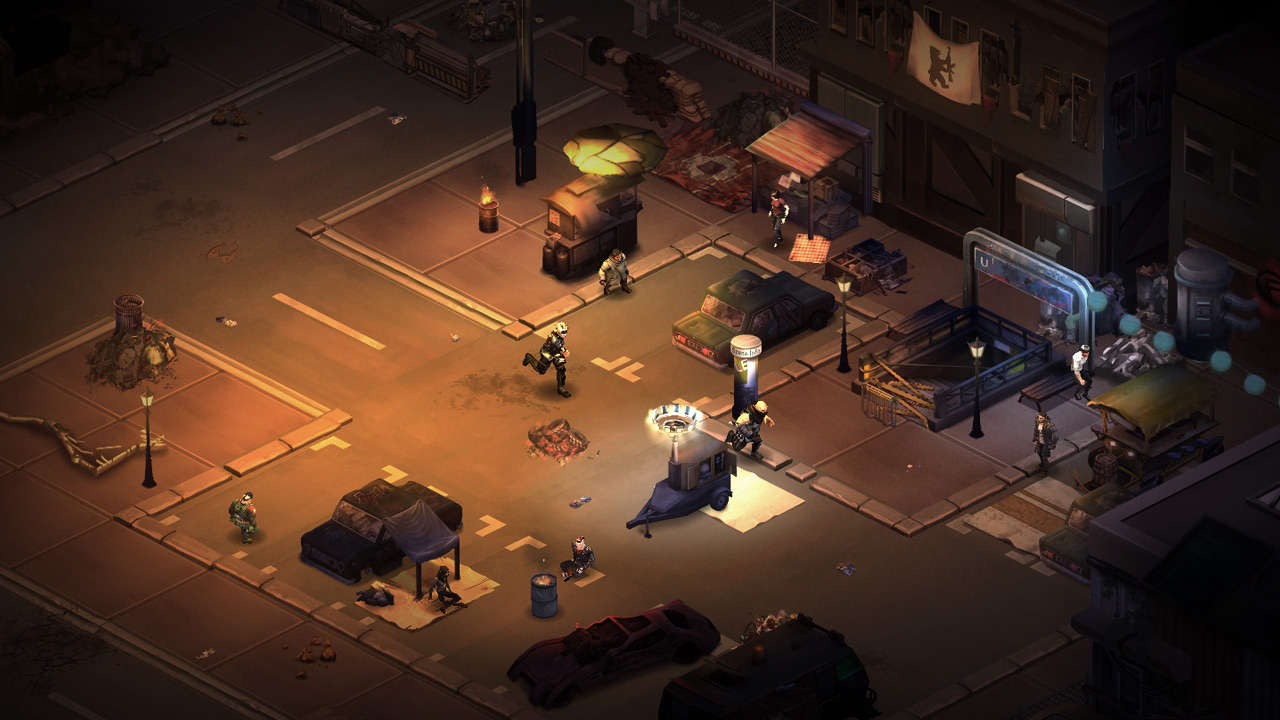
On the run.
It was 42 years ago, on the day that magic returned to the world, when Feuerschwinge descended like an exterminating angel on Germany. It took German forces four months and countless lives to finally bring Feuerschwinge down—an event that was later dubbed the “Dragonfall.”
Lately, the whispers have been growing louder, and some of them seem to suggest that Feuerschwinge may yet live.
Gameplay
Blitz, the decker.
Most closely resembling the Fallout and XCOM games in execution, the combat in Shadowrun Dragonfall consists of using action points to have your units perform actions and move around the battlefield. Simple cover mechanics come into play, as do various penalties or bonuses for flanking opponents, attacking from the optimal range for a given weapon type, and so on.
Where Dragonfall does differentiate itself from the competition, though, is in the unique ways in which it allows a savvy player to use the environment to their advantage. Mage characters can be positioned on “ley lines” to greatly enhance their spellcasting power, while Shamans can find hidden weak spots in the walls between dimensions that allow them to summon powerful demonic creatures.
Perhaps the most interesting, though, are the many uses for the Decker class. Depending on the type of environment where the fight is taking place, a Decker can hack into all sorts of computerized systems in order to benefit the rest of the team. Sometimes the hack might only result in earning a few extra credits, but other times it can be the key to opening restricted areas filled with powerful weapons, or turning the enemy’s own turrets against them—guaranteed to be messy. More critical hacks trigger battles of their own, fought by the infiltrating Decker in cyberspace, which makes it even cooler.
To be perfectly honest, though, the combat in Dragonfall plays a very distant second-fiddle to the roleplaying portion of the game. Unlike its predecessor, Shadowrun Returns, Dragonfall is big on having paths that branch away from (and back to) the main storyline. The player is constantly presented with options that impact the storyline, as well as the characters around you, in ways both minor and major. Turning on the charm to let a security guard allow you into an abandoned silo might only exert a minor impact—perhaps your companions will think that your tongue is just a little too silver—but using your skills as a medic to save the life of a character who would otherwise have died can have a profound impact on later events.
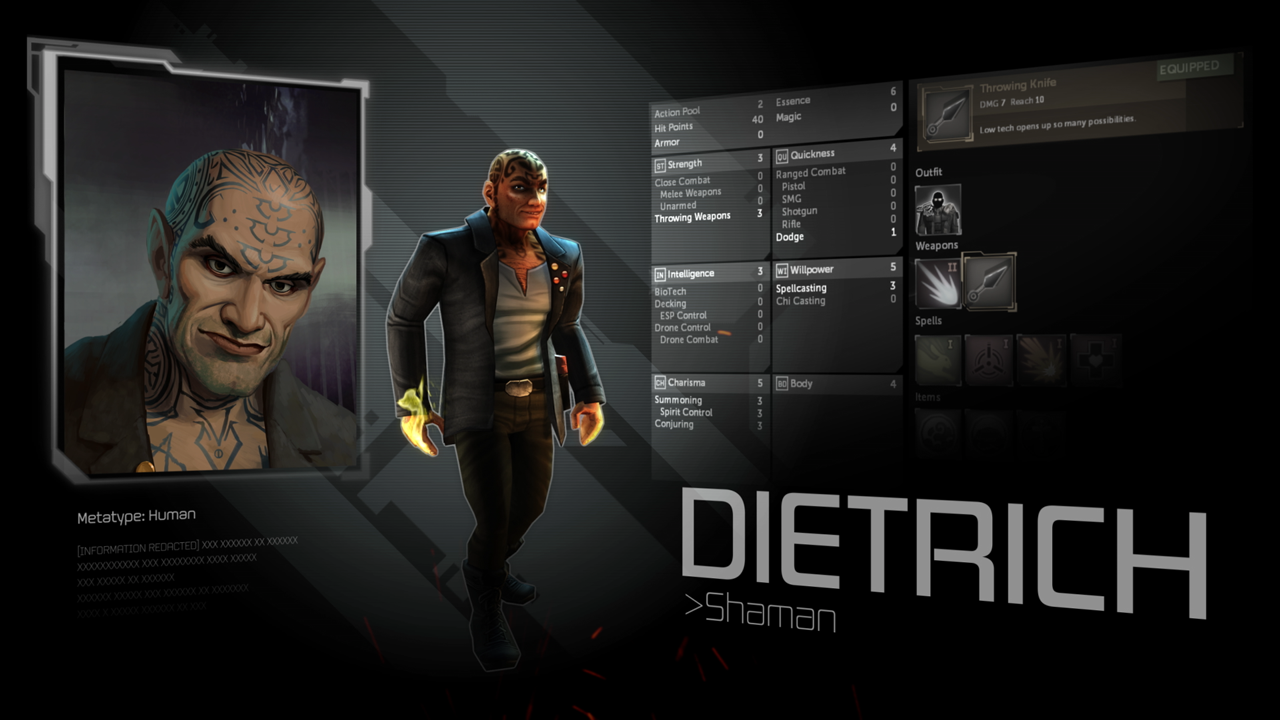
Dietrich, the shaman.
The majority of Dragonfall’s roleplaying mechanics are strictly text-based; which means a lot of reading. There are no cutscenes, and there is very little in the way of animation, so much the game relies on text to convey a great deal of the details that are not apparent from the games visuals. For example, an orkish enforcer type might approach you with a stern, disapproving expression, his right hand hovering just above the gun holster at his side; the game has no way of conveying this other than using—thankfully excellent—written descriptions.
At times, the reliance on text can make the game feel like a visual novel wrapped around turn-based RPG combat, but when the writing is as strong as what’s on offer in Dragonfall it doesn’t personally bother me one bit. If you don’t like to do a lot of reading in your games, though, you should consider whether Dragonfall is really the game for you.
Graphics
The glorious Glory.
Dragonfall is a great example of doing a lot with very little. Technically speaking, the game engine is nothing special: Character models are extremely basic, special effects minimal, and lighting is, for the most part, static. But the lush, painted backgrounds that strike a perfect balance between neon vibrancy and noir chiaroscuro.
Each of Berlin’s locales that you visit over the course of your adventure shows obvious signs of years of turf warfare, anarchic vandalism, and occult catastrophes, and yet it is a surprisingly beautiful city. The walls may be crumbling, the smog omnipresent, and the buildings bleached of colour by acid rain; and yet everywhere there are signs of the city’s inhabitants trying to shine beacons in the gloom. Whether it be the fairly lights criss-crossing the streets, the holographic light displays, or the neon signwriting, colour blossoms like new life breaking through fractured concrete.
Interior locations are no less evocative, with scrupulous attention paid to even the most minor details. One of the standout locations for me was the bar players visit early on in the game. A ram’s head adorned the wall above the multi-coloured bottles behind the bar counter. Dream catchers and other shamanic totems adorn the walls next to game tables and dining booths filled with arm-locked couples. The artistry is superb, and the game world feels less like it was assembled from a tile set and more like it hatched organically. It’s one of Dragonfall’s best features, to be sure.
Price
Surprise!
When Dragonfall was first released, it required that the purchaser owned Shadowrun Returns in order to play the expansion. Fortunately, however, Harebrained Schemes decided to release a Director’s Cut edition with a revamped combat system, new missions, and the removal of the dependency on the original game. The standard price for The Director’s Cut on Steam is $14.99.
Verdict
Stealth is not a huge component of the game, but it does come in to play.
Shadowrun Dragonfall is, in many ways, the game that I hoped Shadowrun Returns would be. Rather than funnelling the player through a rigidly predetermined storyline, Dragonfall lets them play as either saints or sinners of the underworld, and forge their own distinctive path through the narrative. It probably won’t convert players who disliked Shadowrun Returns for the combat, text-driven storytelling, or cyberpunk setting, but it does more than enough to appease those of us in the hardcore computer roleplaying game crowd.
Harebrained Schemes have amply demonstrated both their storytelling chops, and their dedication to the Shadowrun license with Dragonfall. Personally, I can’t wait to see what they do next with Shadowrun Hong Kong, but if you haven’t played Dragonfall already, then I suggest waiting not a minute longer.
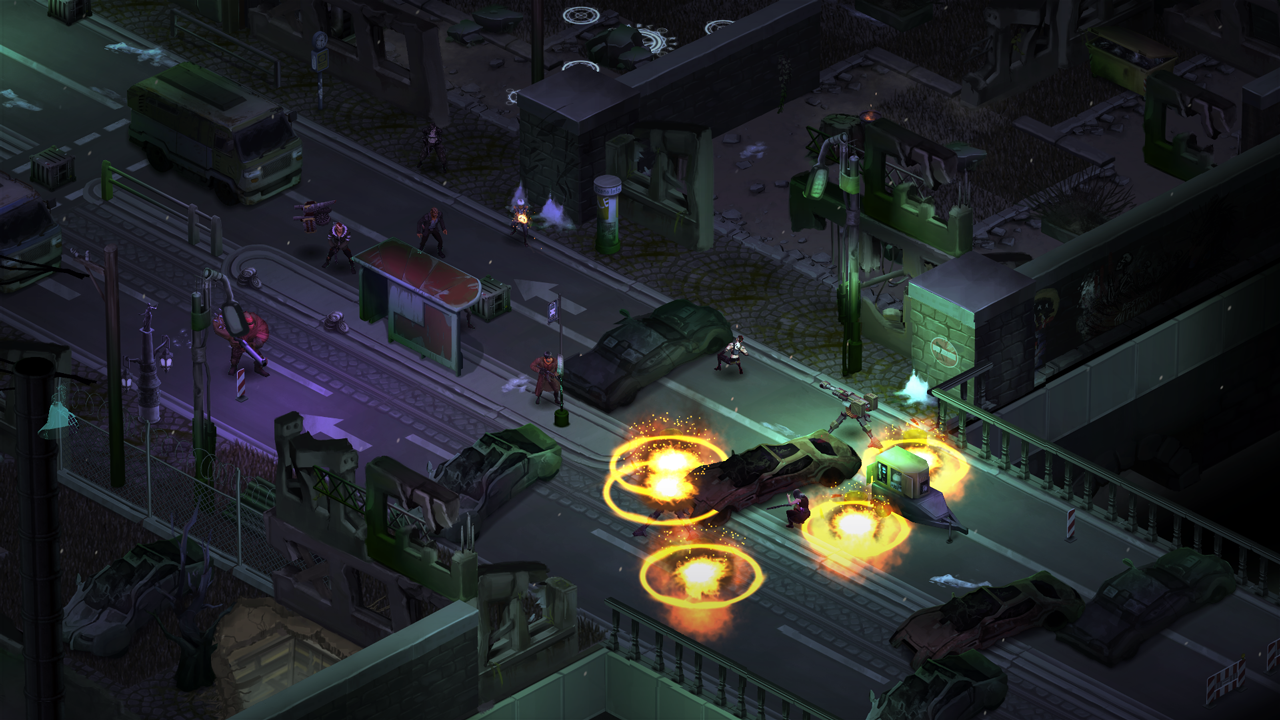
Mean streets
Final verdict: 8/10
Trailers
Dragonfall launch trailer.
